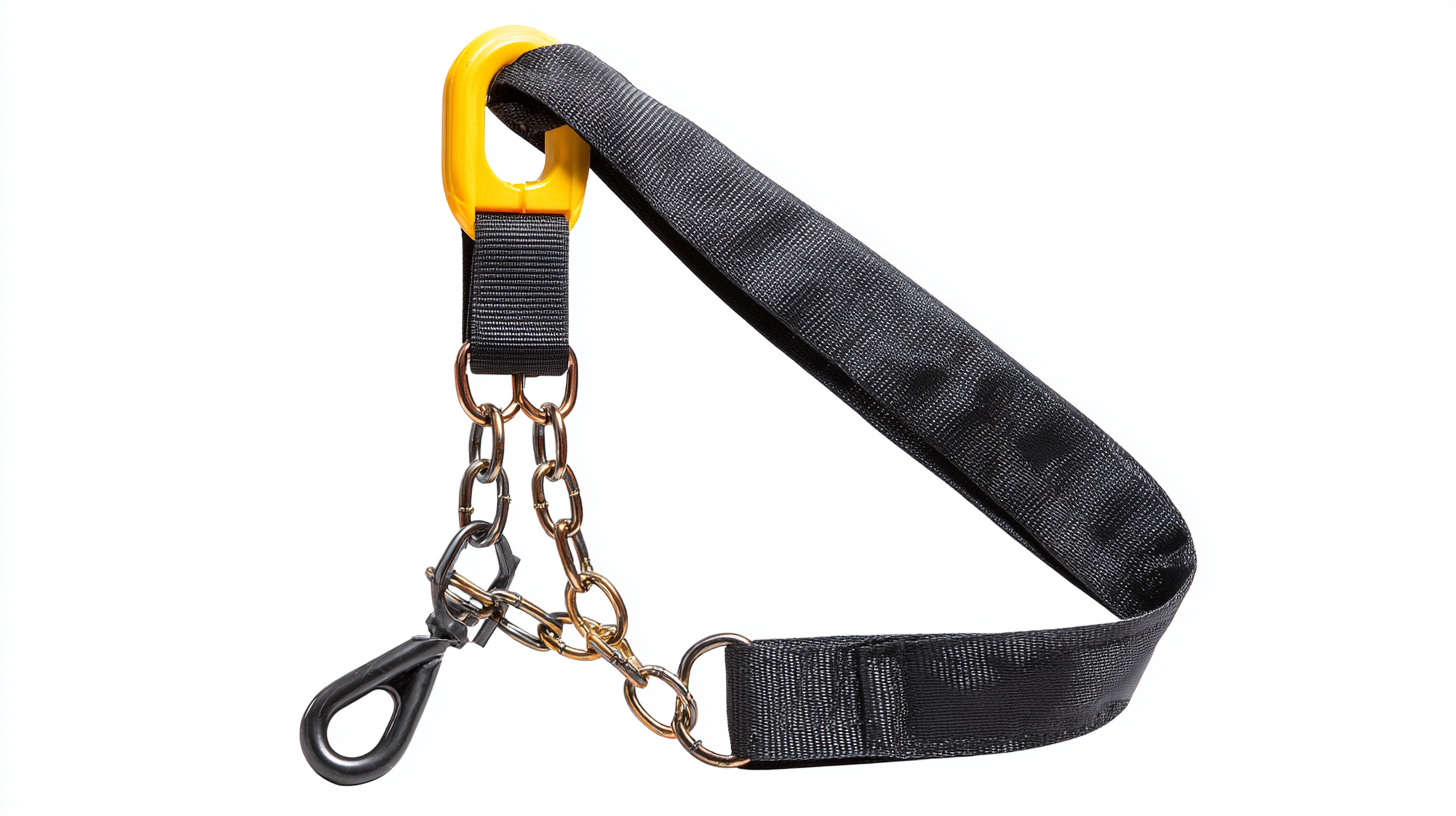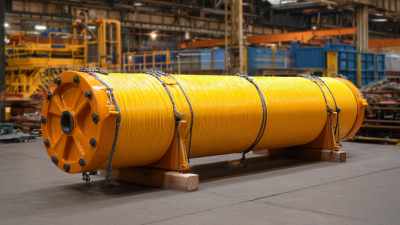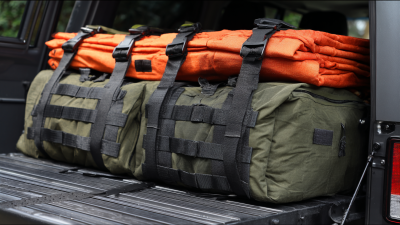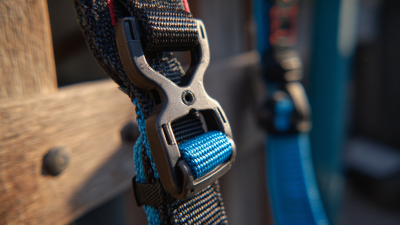In recent years, the use of Polyester Sling in modern safety equipment has gained significant attention due to its impressive strength and versatility, making it an indispensable tool in various industries. According to the Occupational Safety and Health Administration (OSHA), lifting equipment, which includes slings, is critical for maintaining workplace safety, with improper use leading to numerous accidents annually. Polyester Slings, known for their lightweight nature and resistance to environmental factors, have shown to outperform traditional materials in both customer satisfaction and cost-effectiveness. A report by the American Society of Safety Professionals indicates that using high-quality slings could reduce workplace incidents by nearly 30%, showcasing their importance in enhancing safety protocols. As industries prioritize worker safety and cost efficiency, understanding the benefits of Polyester Sling becomes essential for not only compliance but also operational effectiveness in lifting and rigging applications.

Polyester slings have become a staple in modern safety gear due to their outstanding strength-to-weight ratio and durability. According to a report by the Occupational Safety and Health Administration (OSHA), polyester slings can carry loads up to five times their weight, making them an ideal choice for lifting applications. This significant strength ensures that safety equipment can handle heavy loads while maintaining the integrity and reliability necessary in various industrial environments.
In addition to their strength, polyester materials offer high resistance to abrasion and UV degradation, further enhancing their longevity. A study published by the American National Standards Institute (ANSI) indicates that polyester can endure more than 1,000 hours of exposure to UV light without losing its structural integrity, making it particularly suitable for outdoor use. Furthermore, these slings are lightweight, which simplifies their handling and reduces worker fatigue, promoting safer and more efficient operations on job sites. The combination of these advantages positions polyester slings as a leading choice for safety equipment in contemporary settings.

Polyester slings have become a cornerstone in modern safety equipment, particularly due to their remarkable strength and durability. According to the International Safety Equipment Association (ISEA), polyester slings can offer a break strength that exceeds 30,000 pounds, making them an essential choice for heavy lifting applications. The inherent properties of polyester fibers, including their high tensile strength and low stretch, significantly enhance the safety margin for lifting operations in industries ranging from construction to logistics.
In addition to strength, durability is another critical performance metric that sets polyester slings apart. The American National Standards Institute (ANSI) reports that polyester fibers exhibit excellent resistance to abrasion and wear, contributing to their longevity in challenging environments. With proper care, polyester slings can have a lifespan of up to 10 years or more, significantly reducing replacement costs and downtime. Furthermore, their resistance to environmental factors, such as UV radiation and moisture, ensures that they maintain their integrity and performance even when exposed to harsh conditions. This combination of strength and durability not only optimizes safety but also enhances operational efficiency across various sectors.
This chart displays the strength and durability metrics of polyester slings, highlighting the advantages of using polyester in safety equipment.
Polyester slings have become a preferred choice in safety equipment applications, particularly when compared to other materials such as nylon and chain. According to the Occupational Safety and Health Administration (OSHA), polyester slings offer a significant advantage due to their lower stretch capacity—approximately 3% at working load—compared to nylon's 6-8%. This low stretch not only enhances stability during lifting but also minimizes the potential for abrupt changes in load dynamics, a critical factor in avoiding accidents.
Moreover, polyester slings boast excellent resistance to moisture, sunlight, and chemicals. A study by the American National Standards Institute (ANSI) indicates that while nylon slings may lose up to 15% of their strength when wet, polyester retains its integrity, making it a reliable choice for outdoor and industrial use. Additionally, the weight-to-strength ratio of polyester is impressive, with some high-performance polyester slings capable of lifting loads exceeding 40,000 pounds, ensuring that they cater to a wide range of heavy-duty applications without compromising safety. These characteristics underscore polyester's position as a superior material in safety applications, facilitating a safer working environment across various industries.
Polyester slings have become increasingly popular in various industries due to their compliance with stringent safety regulations and guidelines. These slings are crafted from high-strength polyester fibers, which provide remarkable durability and resistance to wear and tear. This resilience is crucial as it aligns with industry standards set forth by organizations such as the Occupational Safety and Health Administration (OSHA) and the American National Standards Institute (ANSI). By adhering to these guidelines, polyester slings ensure that they can handle heavy loads while minimizing the risk of failures that could lead to accidents.
In addition to their strength, polyester slings are designed to meet specific load capacities and usage conditions, which are critical for safety in operations. They are thoroughly tested for factors such as stretch, abrasion resistance, and UV exposure, ensuring that each product meets or exceeds the required specifications. This rigorous testing process provides users with the confidence that their equipment is reliable and safe. Furthermore, the versatility of polyester slings, combined with their ability to meet industry standards, makes them an essential component in modern safety equipment, enhancing both operational efficiency and worker protection in various applications.
| Feature | Description | Safety Standard | Load Capacity (tons) | Use Case |
|---|---|---|---|---|
| Durability | High resistance to wear and tear, suitable for heavy lifting | OSHA, ANSI | 5 | Construction sites |
| Lightweight | Easy handling and transportation | ISO 9001 | 3 | Warehousing |
| Chemical Resistance | Resistant to acids, greases, and alkalis | EN 1492-1 | 4 | Industrial applications |
| UV Resistance | Maintains strength and integrity under sunlight | AS 4497.1 | 2 | Outdoor lifting |
| Versatility | Can be used in various lifting applications | OSHA, ANSI | 6 | Marine lifting |
Polyester slings have become increasingly popular in various industries due to their durability, lightweight nature, and resistance to moisture and abrasion. In the construction sector, for example, a case study from a high-rise building project highlighted the effectiveness of polyester slings in hoisting heavy materials. Contractors reported that the slings' flexibility allowed for efficient maneuvering in tight spaces, ultimately reducing the time needed for lifting operations without compromising safety.

In the maritime industry, polyester slings have been utilized for securing loads during transport. A case study involving a shipping company demonstrated how switching to polyester slings resulted in a significant decrease in load damage and an increase in operational efficiency. The company found that the softness of polyester prevented scratching and wear on cargo surfaces, which is crucial when transporting delicate items. These real-world applications illustrate the versatility and effectiveness of polyester slings across different sectors, underscoring their role in modern safety equipment.






